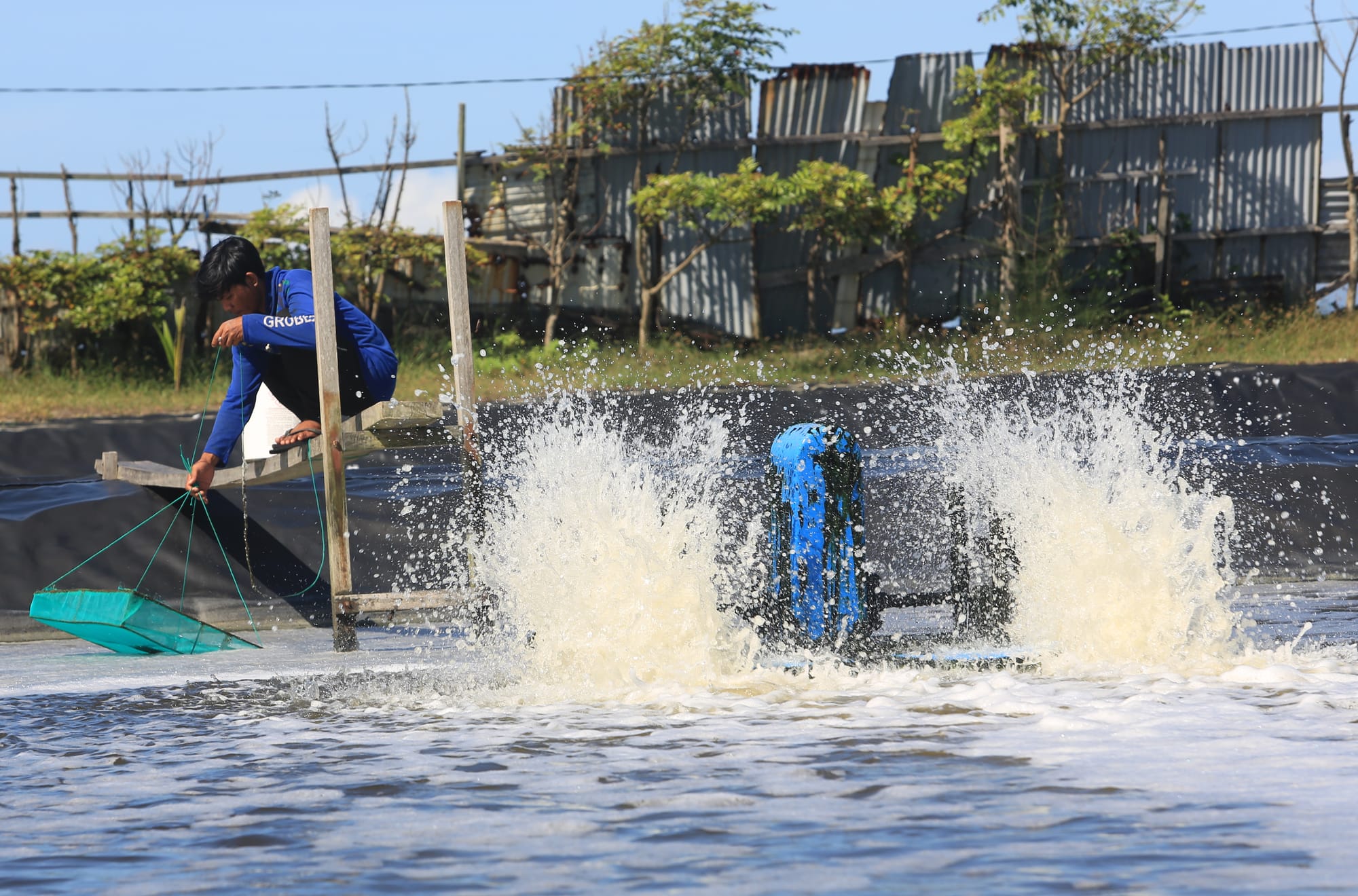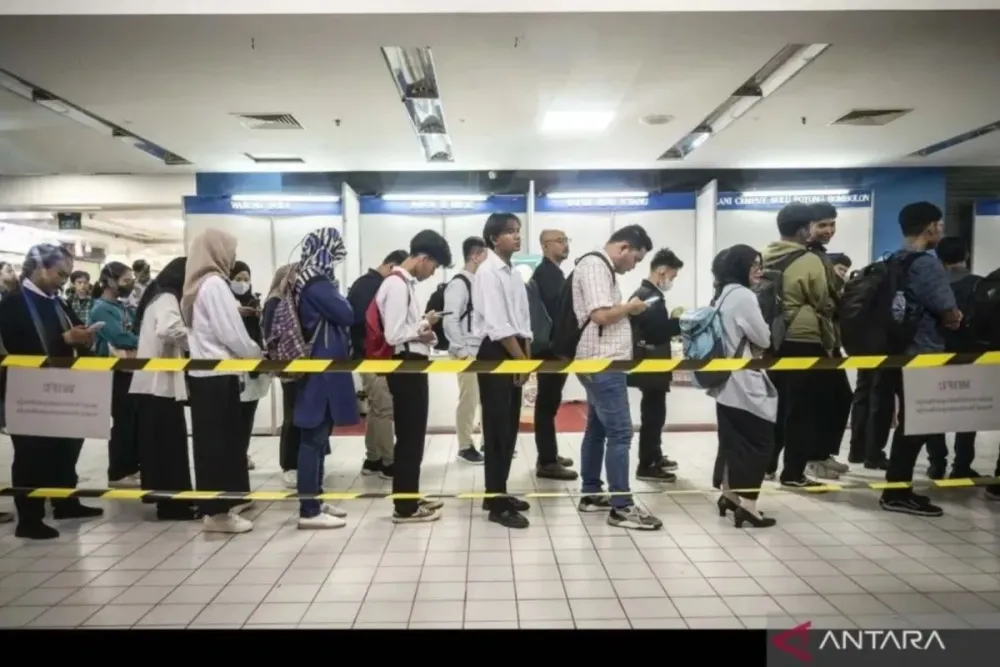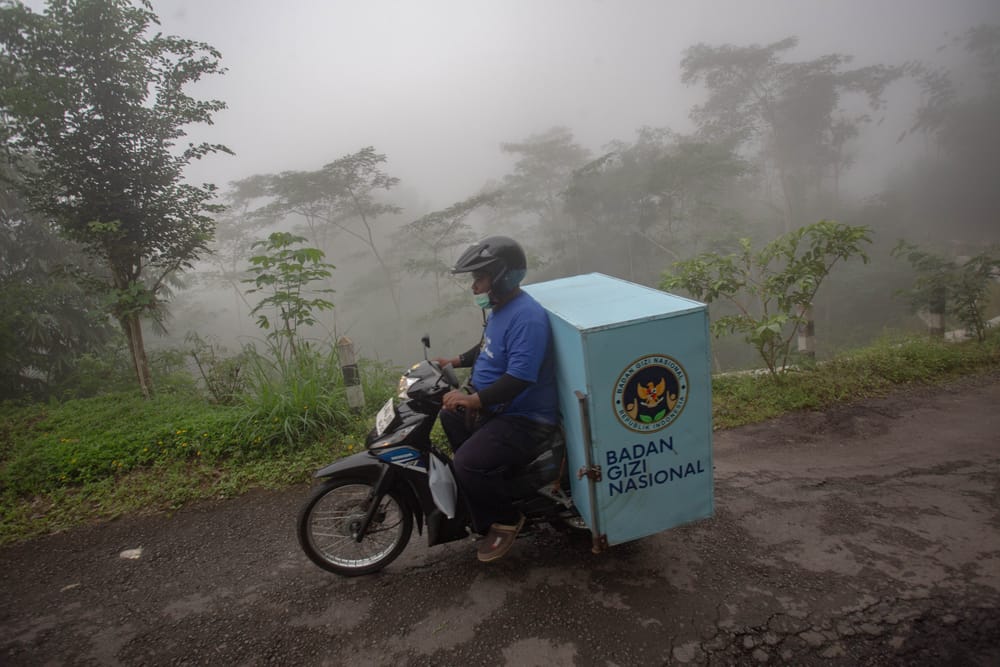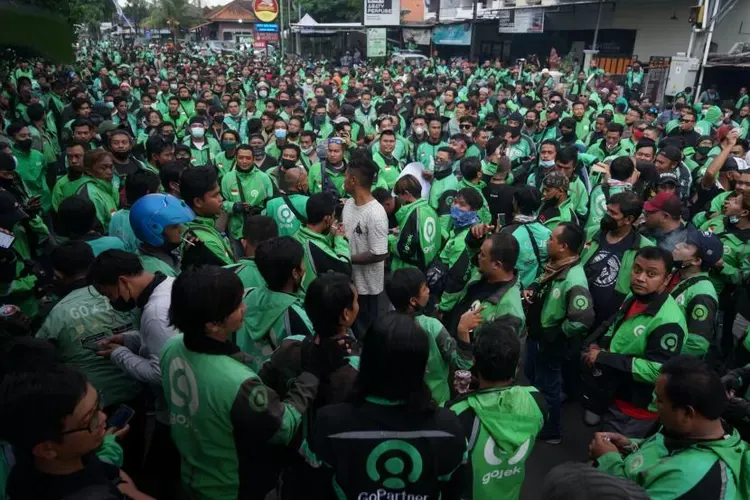The gathering of shrimp industry business players in Banyuwangi, East Java in mid-October was more exciting than in previous years. This is because the shrimp export business is facing a major problem. Last August, the United States threatened to stop shrimp exports from Indonesia due to an incident that tarnished the image of Indonesian shrimp products.
The United States Food and Drug Administration found radioactive elements that were about to enter several ports in the United States, and it was even reported that they had entered Walmart stores in the United States last August.
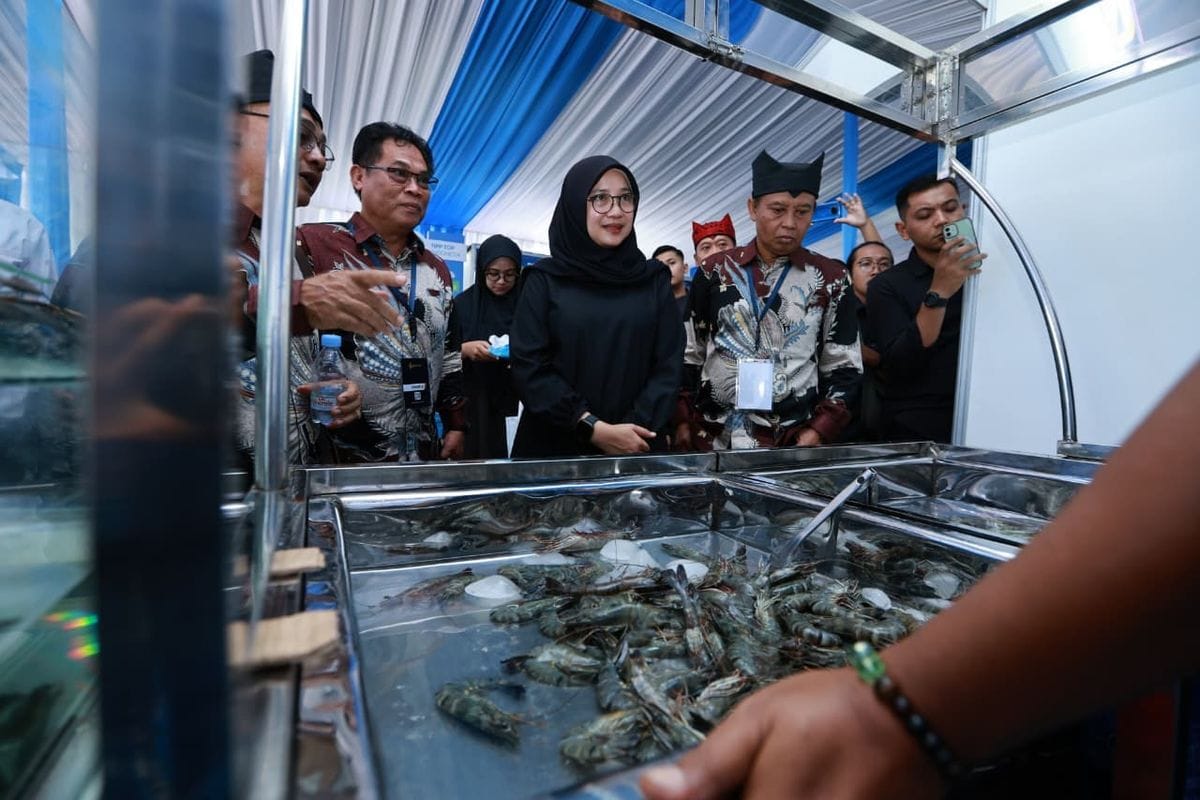
The forum, initiated by the Shrimp Club Indonesia (SCI), which was attended by entrepreneurs, cultivators, shrimp entrepreneurs, and suppliers of shrimp pond facilities from Sumatra, Java, Bali, to West Nusa Tenggara (NTB), also felt shared concern, because the United States, which is Indonesia's main shrimp export market, has the potential to shift its demand to other countries.
And the impact could be extraordinary. "If exports to America are not opened immediately, everything could be paralyzed. Cold storage is full, ponds can't sell, prices fall, and cash flow dies," said Andi Tamsil, Chairman of the Shrimp Club Indonesia (SCI), an association that houses shrimp farmers and exporters.
If exports to America are not opened immediately, everything could be paralyzed. Cold storage is full, ponds can't sell, prices fall, and cash flow dies
The source of this problem stems from the discovery of radiation exposure in the Cikande industrial area, Banten, which is said to have come from the smelting of imported scrap iron containing radioactive elements. Although the levels of Cs-137 found were relatively small, around 68 becquerels per kilogram (Bq/kg) and still below the safe threshold, the radiation attached to processed shrimp packaged in Cikande, immediately made the United States Food and Drug Administration (FDA) tighten all shrimp imports from Indonesia.
Since then, every shrimp product that is about to enter the United States must be accompanied by radiation-free certification, something that has never been requested before. On the other hand, the certification system and tools are not fully ready in Indonesia.
Even though the Government has now started to complete the certification tools. According to Andi Tamsil, the process towards implementing the new certificate is now in the final stages. He mentioned two important deadlines that business actors are waiting for.
"The FDA has scheduled a mandate to the Indonesian quality agency on October 18. If everything goes according to plan, the new certificate trial will start on October 22," said Andi when contacted by SUAR, Monday, October 20, 2025.
According to him, if the trial process goes according to plan, shrimp exports that have been held up can be sent back to America. "If it can be sent, exports will run again, and the supply chain can come back to life. That's our hope," he said.
Domestic market experiencing stagnation
Although exports are expected to recover soon, the sluggish market is still being felt among shrimp farmers. Andi stated that many farmers are now complaining about shrimp prices which have fallen sharply by 30% to 40% due to stalled market absorption. "Currently, absorption is very limited, prices are also under pressure. Many of our farmer friends in the regions are already screaming," said Andi Tamsil.
Before this case emerged, Indonesian shrimp exports to the United States were worth more than US$ 2 billion per year. America is the largest market for Indonesian shrimp, with up to 70% of exports abroad destined for the United States. But since August, export volume has almost stopped completely. Apart from the closed export market, the additional certification requested by the FDA is also not fully ready in the country.
“Before this case, there were already several types of certification. But with this radiation case, a new certification for Cs-137 was added. Just last week, the equipment and SOPs were not clear. Only recently have they become available,” said Andi.
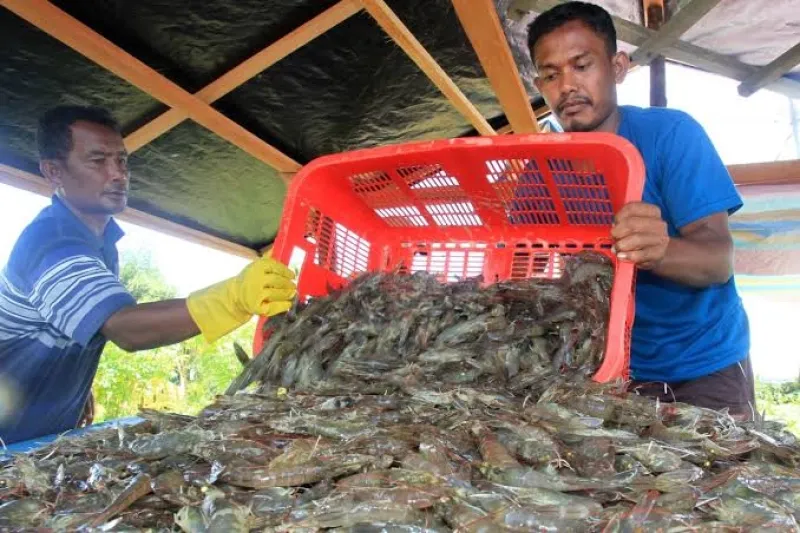
On the other hand, cold storage facilities in East Java, Lampung, and South Sulawesi are now full of frozen shrimp stock that cannot be shipped. Some entrepreneurs are forced to postpone harvests because warehouses are full and cash flow is not moving. “Actually, the quality of the shrimp is still safe for 1 to 2 months, but because there are no purchases, the warehouses are full, and cashflow is jammed. Many are increasing cold storage capacity, but the funds are tight,” explained Andi.
Some farmers have even started selling their shrimp in local markets at much cheaper prices just to cover daily costs. “If this is allowed to continue, it could collapse. This is not just an economic problem, but also a social one, because thousands of shrimp farm and processing workers depend on it for their livelihoods,” he said.
To expand the domestic market, SCI, in one of their seminars in Banyuwangi last week, also held public education about the nutritional benefits of shrimp. “We want the public to know that shrimp is healthy and now the price is also more affordable. If the local market starts to absorb it, the burden on farmers will be slightly reduced,” said Andi.
Meanwhile, while waiting for certainty from the FDA, the Shrimp Club Indonesia, in collaboration with the Ministry of Maritime Affairs and Fisheries, is trying to stimulate the domestic market through a shrimp-eating campaign.
Side effects
This shrimp export crisis to the United States is also considered not just about goods being held up. Once the flow of money stops, the entire production chain can be shaken. Feed factories lose buyers, logistics transportation stops, and thousands of seasonal workers begin to lose income. Many entrepreneurs are also postponing new seeding, worried that the capital cannot be recovered.
“There may not be massive layoffs yet, but incentives, meal allowances, bonuses, all have started to be reduced. If there is no clarity in the next four or five months, the impact could be much more severe,” said Andi.
In the midst of that situation, banks are also starting to be cautious. Credit to the shrimp farming and processing sector is categorized as high risk, because cash flow is disrupted. Andi mentioned that several SCI members have started asking the government to explore the possibility of credit restructuring or light interest incentives, so that their businesses do not die before exports are reopened.
The problem of the shrimp industry is indeed starting to be unraveled. Cross-agency coordination is now starting to move. The Ministry of Maritime Affairs and Fisheries (KKP) through the National Quality Agency has been appointed as the official certification body for Cs-137 testing. However, everyone is still waiting for official confirmation and verification from the FDA. “Authority has been given, but it must be ensured whether they are ready in terms of equipment, human resources, and mechanisms,” said Andi.
He also emphasized that Indonesia cannot create its own standards without FDA approval. “Everything is from the FDA, including the SOP. Because they found the case, they determine the requirements for products to be able to re-enter,” he said.
Andi hopes that the government will accelerate cross-ministerial handling, including banking support so that business actors have additional breathing room. “If cold storage is empty, banks can help through incentives or revolving credit. The important thing is that there is good intention from the government first,” he said.
Besides the American market, the domino effect is starting to be felt in other countries. “There are several countries such as Japan and China that are also starting to question Indonesia's condition. If this is not resolved immediately with America, other countries may also be hesitant,” he said.
He assesses that international market confidence is the most vulnerable thing to lose, and it takes a long time to restore. For this reason, SCI actively encourages the government to accelerate negotiations with the FDA. They hope that the new certification will be recognized soon and exports can be reopened no later than the end of October.
According to him, this case should be an alarm for the government to strengthen the cross-sectoral supervision system, starting from the Nuclear Energy Supervisory Agency (Bapeten), Customs, to security apparatus, so that radioactive materials no longer enter the industrial or export channels.
Solutions from negotiations
Amid concerns about the shrimp industry that could collapse and attract supporting sectors, the Ministry of Maritime Affairs and Fisheries finally reached a dispensation agreement with the FDA on thousands of shrimp containers that were en route to the United States. The agreement took place on October 18 United States time, after a series of negotiations regarding new import rules, namely Import Alert (IA) #99-52.
"After several rounds of negotiations through a special Virtual Bilateral Meeting channel with the FDA, their high-level leaderships finally decided to allow thousands of shrimp containers from Indonesia that are en route and will arrive in the US after October 31, 2025, to enter,” explained the Head of the Marine and Fishery Product Quality Control and Supervision Agency (Badan Mutu KKP), Ishartini.
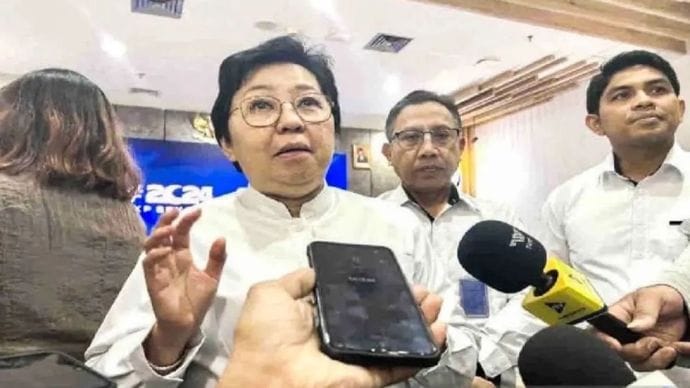
Ishartini explained that her party managed to convince the FDA that more than 1000 shrimp containers that will arrive in the United States after October 31 have gone through a quality assurance process and are equipped with a Quality Certificate (SMKHP) issued by the KKP.
Even so, when they arrive in the United States, thousands of shrimp containers will still be inspected by the FDA to check for Cesium-137 contamination in accordance with United States regulations. Checks related to Cesium 137 are also applied to shrimp containers that enter before October 31.
In addition to being able to ensure that shrimp shipments that have already headed to the United States can still enter the port, the Ministry of Maritime Affairs and Fisheries (KKP) also received recognition from the United States Government (US) as a Certifying Entity (CE) for shrimp exports to the US.
With this recognition, shrimp products that can enter the US market must have a Quality Certificate issued by the KKP. Therefore, exporters, especially from Java and Lampung, must use a Quality Certificate issued by the KKP.
Meanwhile, to protect Indonesian export commodities so that they do not experience unwanted radiation exposure, it is necessary to tighten the flow of goods both entering and leaving. In this case, the Nuclear Energy Supervisory Agency (Bapeten) will supervise the new rules for the implementation of Radiation Portal Monitor (RPM) at import entry points with the person in charge being the Directorate General of Customs and Excise. “This implementation will be mandatory, especially in 18 international ports,” said Haendra Subekti, Deputy for Nuclear Safety Assessment at Bapeten.
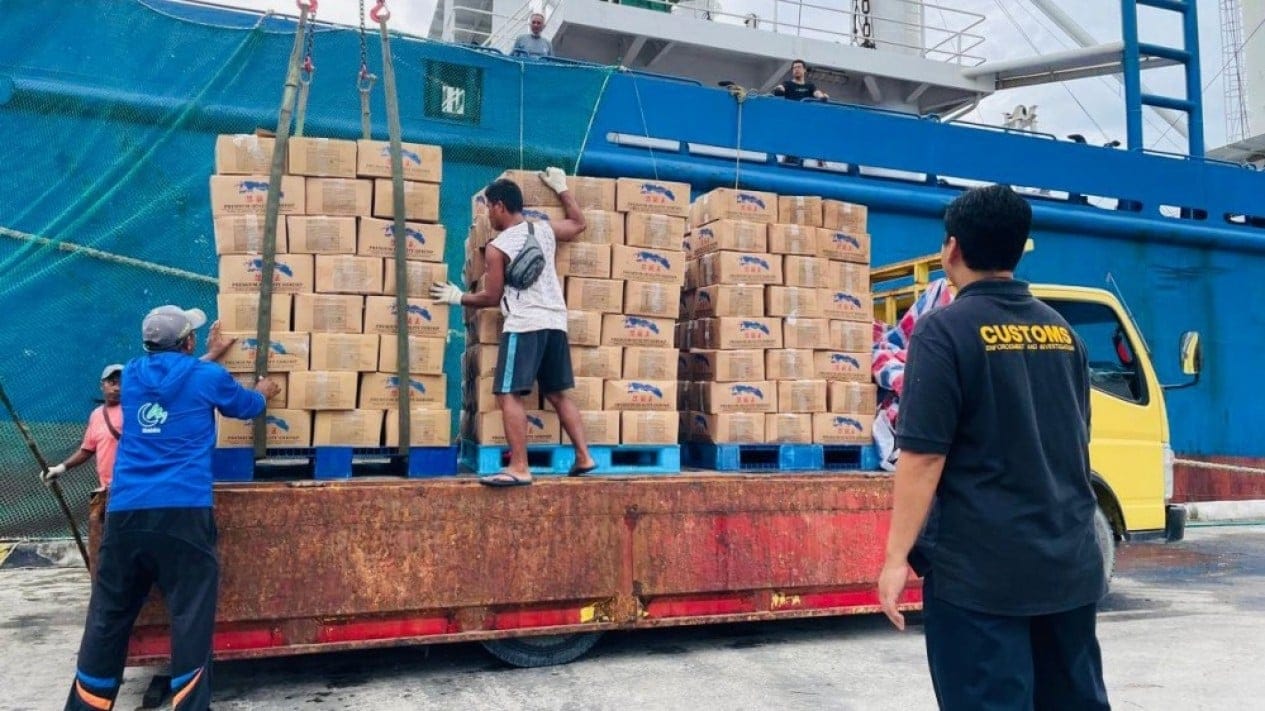
Currently, according to Haendra, only four ports have RPM, based on information from Customs. The reason is simple: budget. Because the cost of procuring the equipment is charged to exporters. So every container that enters will be charged a service fee.
Another effort is to create regulations for the installation of Radiation Portal Monitors in industrial areas, as well as air quality monitoring devices. In addition, industrial areas are also required to install a Radiation Data Monitoring System (RDMS), which is a detector that can measure environmental radioactivity.
“RDMS is installed for non-nuclear industrial areas, as an early detection system if there is radioactive exposure from industrial processes,” Handra explained. Currently, Bapeten has 37 RDMS installed in nuclear facilities such as in Serpong, Yogyakarta, and Bandung, as well as some on the border to detect potential contamination from abroad.
“Together with BMKG, we installed this tool, and the number is only 38 units. In the future, industrial areas will also be required to install RDMS. Although this program is long-term, its implementation is targeted to begin in the next 1–2 years,” he revealed.
Mukhlison, Dian Amalia, and Gema Dzikri

